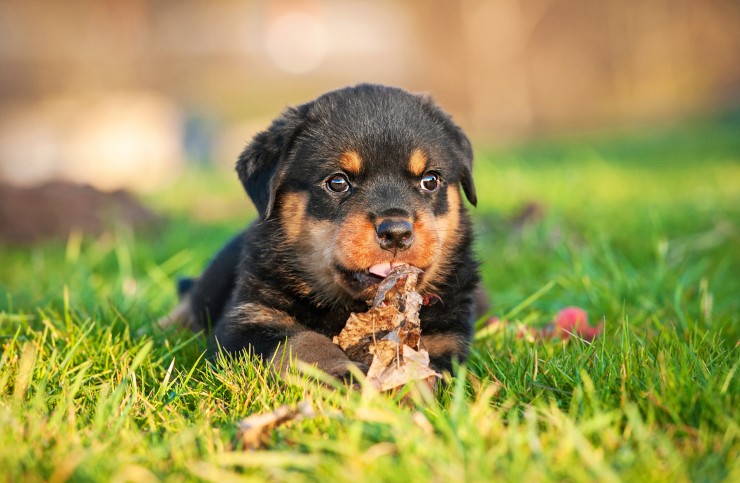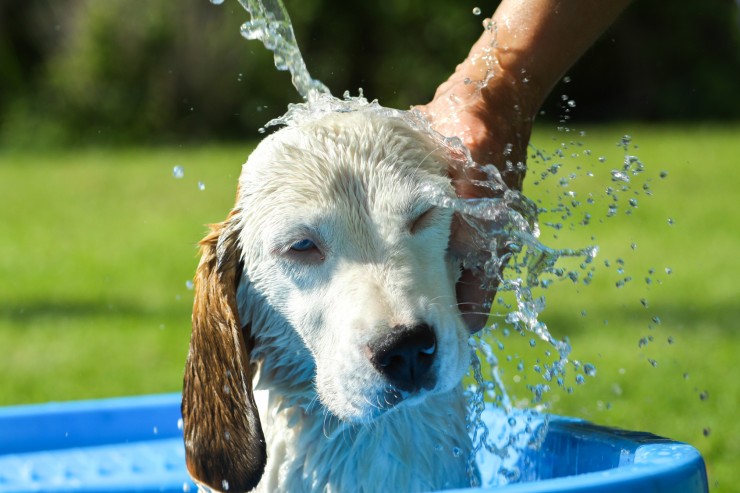
Deciding to switch your dog over to a raw diet is a scary proposition. There are so many variables and you're responsible for all of them. There is no AAFCO looking over your shoulder, handing you little packets of pre-fab nutrients. You can't count on your vet for information most of the time, either, since many vets seem to take a dim view of feeding anything that doesn't come from the shelf at their office. If you have a vet who understands and advocates raw, consider yourself lucky and way ahead of the game.
One of the first questions everyone asks is “how much?”
First, invest in a decent kitchen scale. You're going to be measuring by weight, not volume now.
The rule of thumb is to feed an adult dog in normal health at a normal activity level between two to four percent of their body weight. Adjust the amounts, taking your dog's activity level and metabolic rate into consideration as well as the fat to lean ratio of the what you're feeding at any given time. Fat carries more calories per weight than anything else, so if you've got a fattier cut of meat for that meal, cut back some on the amount.
Pregnant females and pups are going to eat a higher percentage of food to body weight, but don't overdo it all at once; gradually add to the quantity, offering the extra in between regular meals as you learn how much is good for your dog to eat at one time.
What kind of meats and other foods should I feed my dogs? What should I avoid?
Unless your dog has food allergies, it's best to feed a variety of meats. Different protein sources have different nutritional qualities; for instance, red meats are higher in iron and B vitamins than poultry; cold water fishes contain essential fatty acids in abundant quantities that are lacking in other meat sources, but take it easy on the fish and be careful where they come from -- you want to avoid overloading on mercury.
Organ meats should be part of your feeding program; livers, kidneys, gizzards. Be aware that liver and kidney are not only rich but are the filtering organs of the body. I do tend to shy away from these organs unless I know I'm getting them from a source that didn't “supplement” their livestock with hormones, antibiotics or the other boosts pushed on producers by livestock organizations.
Hearts are a wonderful addition to a raw diet.
Perhaps the most difficult item to find is also the grossest. Green tripe. It has a smell you will never forget but dogs love it. They love week old carrion too, though.
If you have a chance to add more exotic meats, go for it. Venison, elk, goat, duck, rabbit, the list is as long as you want it to be. Oh, and don't be afraid of pork. The real concern with pork -- or any meat higher in fat -- is calories and not overloading on the fatty content as it can, in some dogs, cause pancreatitis.
Fruits and vegetables: should you feed them?
That's up to you and your dog. Certainly they shouldn't make up a large proportion of the diet, but if your dog loves them, unless it's a food that's naturally toxic to dogs, there's nothing wrong with it. Dogs aren't total carnivores; they eat foods other than meat. Cats are much closer to being true carnivores and even they like to sneak out and nibble on the odd bit of vegetation every now and then -- or sneak some yogurt or ice cream.
Speaking of yogurt, go ahead and let your dog enjoy it if you feel so inclined, just makesure you're getting the most bang for your buck and get the stuff with active cultures. Buttermilk is another source of probiotic cultures that most dogs enjoy.
It's not going to cause a rift in the continuum if you share some of what's on your plate with your dog, either, as long as you aren't eating a plateful of Twinkies and Sour Patch Kids, and you shouldn't be eating that stuff either.
 Five Universal Personality Traits Of The Rottweiler
Five Universal Pe
Five Universal Personality Traits Of The Rottweiler
Five Universal Pe
 If Dogs Love Swimming, How Come They Hate Being Bathed?
If Dogs Love Swim
If Dogs Love Swimming, How Come They Hate Being Bathed?
If Dogs Love Swim
 Ten Tips For Keeping Your Rabbit Happy And Healthy For Life
Ten Tips For Keep
Ten Tips For Keeping Your Rabbit Happy And Healthy For Life
Ten Tips For Keep
 Why Might Your Dog Suddenly Begin To Display Personality Changes?
Why Might Your Do
Why Might Your Dog Suddenly Begin To Display Personality Changes?
Why Might Your Do
 Some Gorgeous Brindle Dog Breeds
Some Gorgeous Bri
Some Gorgeous Brindle Dog Breeds
Some Gorgeous Bri
Copyright © 2005-2016 Pet Information All Rights Reserved
Contact us: www162date@outlook.com